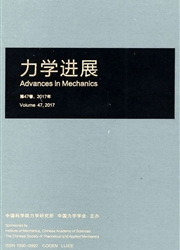

 中文摘要:
中文摘要:
在散热性能分析中,解析地给出了点阵夹芯结构的整体传热系数和等效压降,定义了散热性能指标.通过连续介质力学的方法和经典的层合理论,并通过串并联模型给出了碳纤维增强点阵夹芯结构整体的刚度特性.在满足既定的承载要求和一定的散热要求约束下,提出了一种对碳纤维增强点阵夹芯结构进行多功能优化设计的协同优化方法,在设计中采用了更符合工程实际的基于分枝定界法的混合离散优化方法,得到了夹芯结构质量函数的最小值,从而实现了轻质的目的.同时对不同结构形式的芯子做了相应的比较和分析,结果表明:金字塔型点阵夹芯结构在实现轻质的同时,具有较强的散热能力,而且承载能力更好,更为轻质高效.
 英文摘要:
英文摘要:
The overall heat transfer coefficients and equivalent pressure loss of lattice truss sandwich structures were derived in analytical forms as well thermal performance index was defined in heat dissipation analysis. The overall effective stiffness of lattice truss sand- wich structure was analyzed by continuum method combined with classical lamination theory and series parallel model. Multifunctional collaborative optimal design for sandwich struc- tures with carbon fiber reinforced lattice truss cores was presented with satisfying heat dissi- pation and load capacity constraints, the optimum weight of sandwich structures was ob- tained using discrete hybrid optimization method based on branch and bound approach. The results demonstrate that pyramidal lattice truss sandwich structures provide higher levels of heat dissipation efficiency and load capacity, more ultralight and efficiently, by analyzing and comparing different types of truss cores.
 同期刊论文项目
同期刊论文项目
 同项目期刊论文
同项目期刊论文
 Basic solutions of two parallel limited-permeable mode-I cracks in piezoelectric/piezomagnetic compo
Basic solutions of two parallel limited-permeable mode-I cracks in piezoelectric/piezomagnetic compo High Temperature Residual Properties of Carbon Fiber Composite Sandwich Panel with Pyramidal Truss C
High Temperature Residual Properties of Carbon Fiber Composite Sandwich Panel with Pyramidal Truss C Mechanical behavior of carbon fiber composite lattice core sandwich panels fabricated by laser cutti
Mechanical behavior of carbon fiber composite lattice core sandwich panels fabricated by laser cutti 期刊信息
期刊信息
